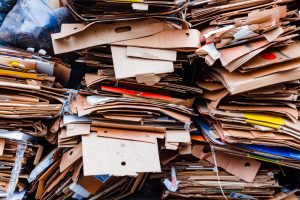
New method to develop fibre reinforced plastic composites from wastepaper
Canadian Plastics
3D Printing Materials Research & DevelopmentUniversity of Iowa engineers have received nearly $1 million to improve the speed and reduce the labour costs of remanufacturing recycled wastepaper.

Photo Credit: Pykodelbi/ Adobe Stock
A new mash-up of additive manufacturing, artificial intelligence, and waste paper might just result in a bigger supply of high-value fibre reinforced plastic (FRP) composites.
Behind the project is a simple economic truth: Recycling wastepaper for reuse as new paper requires extensive cleaning and refinement of the fibres so the new product is free of inks, adhesives, and dyes. So, instead of turning old paper and cardboard into new paper, engineers at the University of Iowa, in Iowa City, are working to enhance the process of turning wastepaper into FRP composites.
Xuan Song, assistant professor of industrial and systems engineering, along with Chao Wang, assistant professor of industrial and systems engineering, and H.S. Udaykumar, professor of mechanical engineering, have received nearly US$1 million from REMADE institute, a public-private partnership established by the U.S. Department of Energy, to improve the speed and reduce the labour costs of remanufacturing recycled wastepaper.
The team will use additive manufacturing (AM) and artificial intelligence (AI) to improve the process of remanufacturing recycled materials into FRP composites. “One of the challenges in additively manufacturing high-strength composites from recycled paper fibres is that the paper fibres vary greatly in density, size, and flexibility,” said Song. “A successful AM process would self-adjust in real time to accommodate the differing quality of recycled paper.”
The project will focus on developing a smart AM technology based on a composite-based AM (CBAM) process pioneered by industrial partner Impossible Objects Inc. – an AM technology supplier based in Northbrook, Ill. – for producing high-strength FRP composites from recycled paper fibres, which can adapt to the material differences of the recycled paper via real-time sensing and data-calibrated physical modeling. Impossible Objects’ CBAM process is said to produce composites from various fibres, including carbon fibre and fibreglass, with stronger properties than other AM technologies and faster speed than traditional composites methods.
“What sets our team apart is our ability leverage strengths in process development and modeling, composite fabrication, complex modeling, and multi-scale modeling,” said Song.
The team hopes that the outcome of their research will lead to more widespread adoption of turning wastepaper into high-value FRP.
Source: University of Iowa
